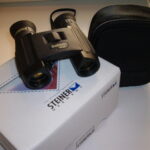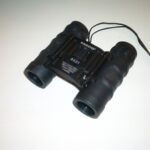Stargazing is one of the most challenging hobbies to get started in. So many people begin stargazing by going out and buying the most accessible telescope plant it in their backyards and then give up after not being able to find anything with what they have. To begin stargazing the practical approach would be to skip the telescope and binoculars and just head out with your eyes, a good star atlas, and a flashlight. With these three items and some basics skills anyone can learn to stargaze and eventually move onto using a telescope and discovering even more gems in the sky.
Every beginning stargazer is going to need a few supplies though. First, make sure you are dressed for the weather, even summertime stargazing requires some layers. Look in stores for a good star atlas that gives you a view of the entire sky exactly the way you would view it from the ground. A flashlight is also necessary to help you read any atlas or books you might bring along.
When choosing a place to stargaze take yourself as far away from every source of artificial light. Also look for a spot that does not have any large obstructions on the horizon.
Here are a few things to help you get started.
Night Signposts
Every season has a different figure or marker in the sky made up of stars that you can use to help you find other constellations in the sky. During winter the telltale signpost in the sky is the constellation Orion, the hunter, which is spread out across the sky directly overhead in the Northern Hemisphere. To find Orion look for a string of three stars directly overhead in the sky and very close together. The rest of the constellation Orion will be formed by a large rectangle of stars around Orion, they serve as Orion’s legs and arms. You can use the appendage’s of Orion to find other significant constellations, stars and sights in the sky. Also visible in the sky and useful as a marker in the winter is the Winter Triangle. The Winter Triangle is found directly next to the constellation Orion and one of the stars, Betelgeuse, is the upper left corner star in Orion. Once you locate Betelgeuse, you can easily distinguish the two other bright stars in the sky that form the triangle to the left of Orion.
In Spring, the best signpost in the sky is the Big Dipper. The Big Dipper is overhead in Spring and consists of four stars in a tight square and a long handle of stars extending out from the top left corner star. The two stars that form the right edge of the dipper are referred to as the Pointers because they point to Polaris and the star Regulus in the constellation Leo. The last star in the handle of the constellation points to the stars Arcturus and Spica further along in the sky.
The signpost visible in Summer is the easiest and most distinguishable of all the signposts to find. If you look overhead in the sky you will see a distinct cross shape shining in the sky. This star is the constellation Cygnus, the swan, and lies in the Summer Triangle. Once you have clearly located Cygnus, you will notice that the star forming the top of the cross is a lot brighter than the other stars in the cross. This star is known as Deneb and is one of the three stars in the Summer Triangle. The other two stars Vega and Altair form a large triangle around Cygnus.
In Autumn the signposts are a little harder for us to distinguish but still very doable. Look overhead for a large square of four stars, this is the Square of Pegasus. Three of the stars in the square can be used as pointers to find other constellations. Another good signpost in the sky is the constellation Cassiopeia a constellation in the shape of a W.
Using Your Hand As A Scale
Being able to learn how far to look between stars and constellations is essential when stargazing. Most star guides give instructions for finding stars in degrees because it how the sky is divided and how we map all new discoveries. Since there is not a grid laid out in the sky for us to see, finding stars according to degrees can seem daunting and even discouraging to the beginner. So instead use your hand which can be an excellent tool to determine degrees in the sky.
You need to remember that this is a rough way of measuring the sky since everyone has a different size finger, fist and hand. In general though a pinky finger held outstretched to the sky is about 1 degree. Your three middle fingers together measure around 5 degrees, a closed fist 10 degrees, your pointer and pinky outstretched measure 15 degrees, and your thumb and pinky are 25 degrees apart.
When you become more comfortable star gazing you can check how accurate your hand measurements are with actual degrees by comparing the size of your hand to the Big Dipper. The entire length of the Big Dipper is 25 degrees, from the top pointer to the final star in the handle. The length of the top of the dipper is 10 degrees.
Have fun stargazing!






